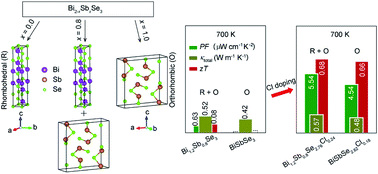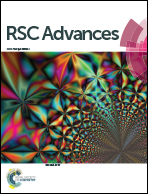Improvement in the thermoelectric performance of highly reproducible n-type (Bi,Sb)2Se3 alloys by Cl-doping†
Abstract
(Bi,Sb)2Se3 alloys are promising alternatives to commercial n-type Bi2(Te,Se)3 ingots for low-mid temperature thermoelectric power generation due to their high thermoelectric conversion efficiency at elevated temperatures. Herein, we report the enhanced high-temperature thermoelectric performance of the polycrystalline Cl-doped Bi2−xSbxSe3 (x = 0.8, 1.0) bulks and their sustainable thermal stability. Significant role of Cl substitution, characterized to enhance the power factor and reduce the thermal conductivity synergetically, is clearly elucidated. Cl-doping at Se-site of both Bi1.2Sb0.8Se3 and BiSbSe3 results in a high power factor by carrier generation and Hall mobility improvement while maintaining converged electronic band valleys. Furthermore, point defect phonon scattering originated from mass fluctuations formed at Cl-substituted Se-sites reduces the lattice thermal conductivity. Most importantly, spark plasma sintered Cl-doped Bi2−xSbxSe3 bulks are thermally stable up to 700 K, and show a reproducible maximum thermoelectric figure of merit, zT, of 0.68 at 700 K.



 Please wait while we load your content...
Please wait while we load your content...